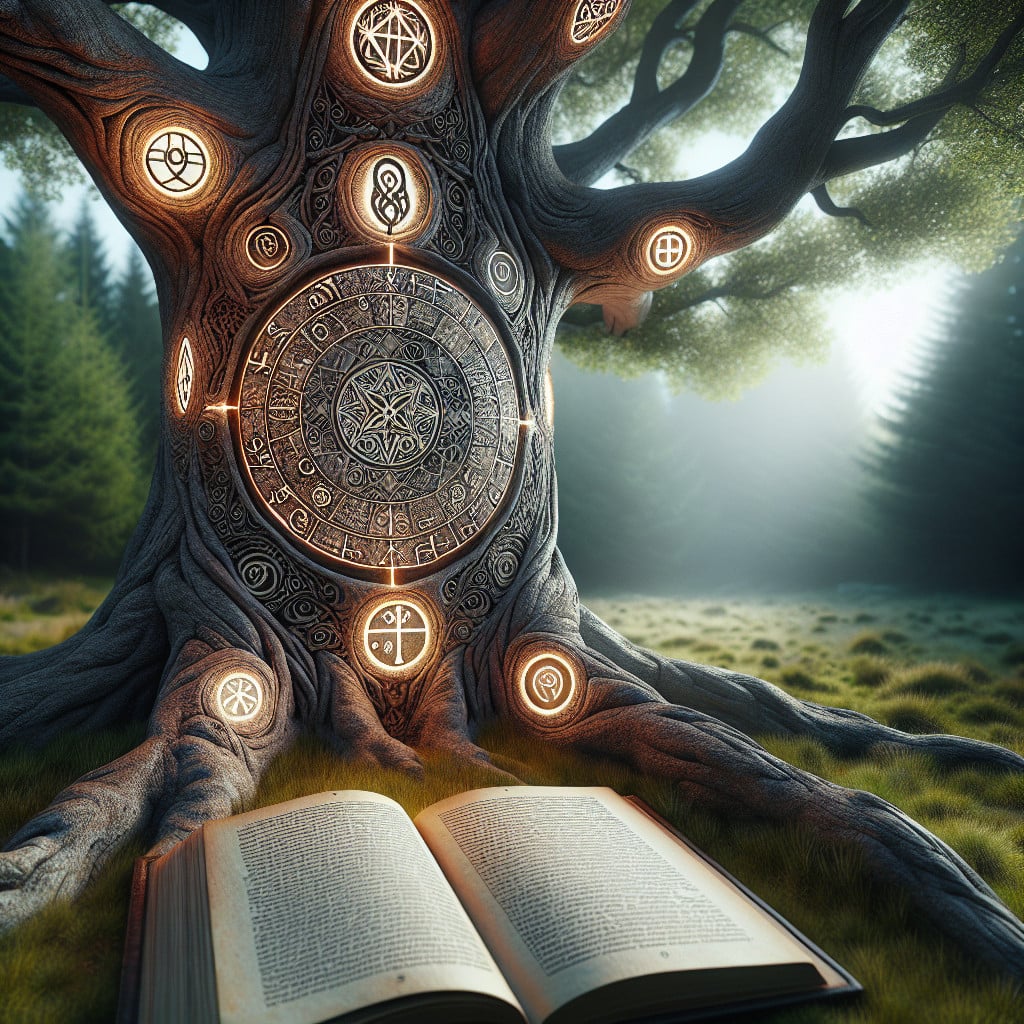The Pagan Tree is an ancient symbol of growth, fertility, and renewal. It can be found in many different forms in cultures around the world, from the Tree of Life in the myths of Ancient Greece to the sacred Fig Tree in Hinduism. It is a powerful symbol of nature’s power and has a deep spiritual meaning for those who practice Paganism. In this article, we will explore the origin and history of the Pagan Tree and its significance in modern Paganism. We will also look at some of the rituals and symbols associated with the Pagan Tree that are still practiced today.
The Pagan Tree is a symbol of ancient and modern beliefs. It is a symbol of power, protection, and fertility, and has been revered and incorporated into the rituals of many cultures for centuries. The Pagan Tree is a symbol of growth, transformation, and new beginnings. The Pagan Tree is an important part of many different spiritual and religious practices, and it is believed to be a source of strength, wisdom, and protection. In this article, we will explore the history, symbolism, and significance of the Pagan Tree.
What is the Pagan Tree?
The Pagan Tree is a symbol of many different Pagan beliefs and practices. It is often seen as a representation of the power of nature and the spiritual forces that shape and guide the universe. The Pagan Tree is believed to have deep roots that connect it to the earth, and its branches reach up to the heavens. It is seen as a symbol of growth, transformation, and new beginnings.
History of the Pagan Tree
The Pagan Tree has been in existence for centuries, with roots that date back to the ancient Celts and Druids. The Celts believed that the Pagan Tree was an important part of spiritual and religious practices, and it was often used in rituals and ceremonies. The Druids used the Pagan Tree as a symbol of power and protection, and it was used to represent the cycle of life, death, and rebirth.
Symbolism of the Pagan Tree
The Pagan Tree is seen as a symbol of power, protection, and fertility. Its branches reach up to the heavens, representing a connection between the physical and spiritual worlds. The Pagan Tree is also seen as a symbol of growth, transformation, and new beginnings. It is believed to be a source of strength, wisdom, and protection.
Significance of the Pagan Tree
The Pagan Tree is an important part of many different spiritual and religious practices. It is believed to be a powerful symbol of protection and growth, and it is often used in rituals and ceremonies. The Pagan Tree is seen as a representation of the power of nature and the spiritual forces that shape and guide the universe. It is a symbol of strength, wisdom, and protection, and it is a reminder of the cycle of life, death, and rebirth.
Conclusion
The Pagan Tree is an important symbol of many different spiritual and religious practices. It is believed to be a powerful symbol of protection and growth, and it is often used in rituals and ceremonies. The Pagan Tree is seen as a representation of the power of nature and the spiritual forces that shape and guide the universe. It is a symbol of strength, wisdom, and protection, and it is a reminder of the cycle of life, death, and rebirth. The Pagan Tree is a powerful symbol of growth, transformation, and new beginnings, and it is a source of strength, wisdom, and protection.
The Pagan Tree is a symbol of strength, knowledge, and connection to the natural world. It is a reminder of the power of nature and the importance of respecting and caring for it. By connecting to the Pagan Tree, we can feel a sense of belonging, a connection to something larger than ourselves, and a reminder of the potential for growth and transformation. By understanding and respecting the Pagan Tree, we can better understand our place in the world and our relationship to the environment. In doing so, we can strive to create a more sustainable and harmonious future for ourselves and our planet. The Pagan Tree is a powerful symbol that reminds us of our interconnectedness with the natural world and the importance of caring for it.





